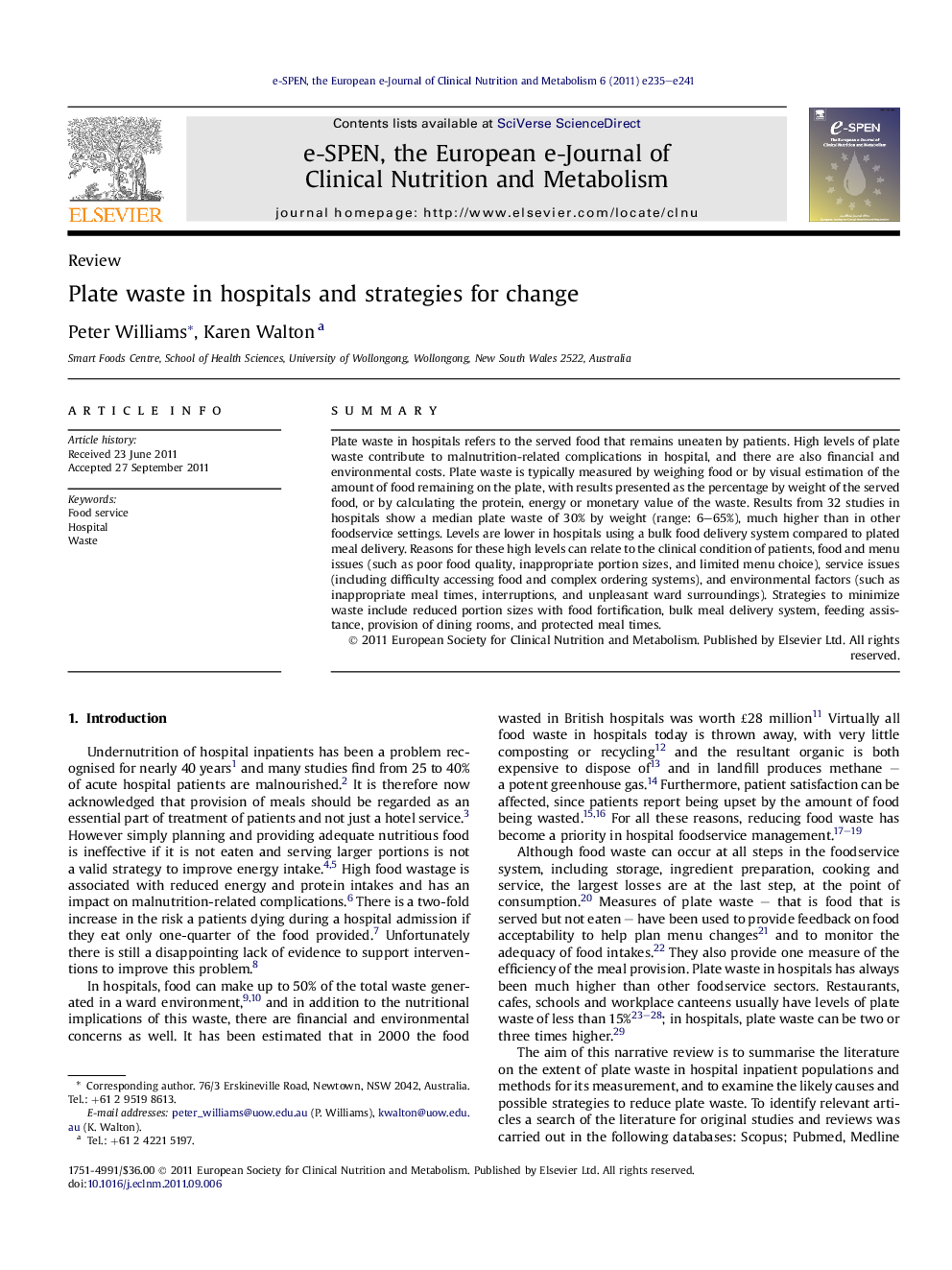| Article ID | Journal | Published Year | Pages | File Type |
|---|---|---|---|---|
| 2685335 | e-SPEN, the European e-Journal of Clinical Nutrition and Metabolism | 2011 | 7 Pages |
SummaryPlate waste in hospitals refers to the served food that remains uneaten by patients. High levels of plate waste contribute to malnutrition-related complications in hospital, and there are also financial and environmental costs. Plate waste is typically measured by weighing food or by visual estimation of the amount of food remaining on the plate, with results presented as the percentage by weight of the served food, or by calculating the protein, energy or monetary value of the waste. Results from 32 studies in hospitals show a median plate waste of 30% by weight (range: 6–65%), much higher than in other foodservice settings. Levels are lower in hospitals using a bulk food delivery system compared to plated meal delivery. Reasons for these high levels can relate to the clinical condition of patients, food and menu issues (such as poor food quality, inappropriate portion sizes, and limited menu choice), service issues (including difficulty accessing food and complex ordering systems), and environmental factors (such as inappropriate meal times, interruptions, and unpleasant ward surroundings). Strategies to minimize waste include reduced portion sizes with food fortification, bulk meal delivery system, feeding assistance, provision of dining rooms, and protected meal times.
